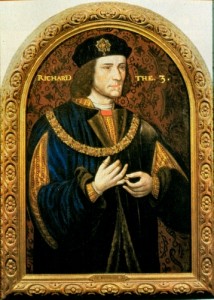
Word of the Day: Villain
Today’s word of the day, thanks to Swynfen Jervis’s A Dictionary of the Language of Shakespeare, is villain, a noun meaning a servant or a slave, according to Jervis. He quotes A Comedy of Errors, Act 1, scene 2: “A trusty villain, sir that very oft, / When I am dull with care and melancholy, Lightens my humour with his merry jests.”
Of course, now villain means “a cruelly malicious person who is involved in or devoted to wickedness or crime; scoundrel,” or “a character in a play, novel, or the like, who constitutes an important evil agency in the plot” (https://www.dictionary.com/browse/villain?s=t). This is what www.etymonline.com reports about the word:
“c. 1300 (late 12c. as a surname), ‘base or low-born rustic,’ from Anglo-French and Old French vilain ‘peasant, farmer, commoner, churl, yokel’ (12c.), from Medieval Latin villanus ‘farmhand,’ from Latin villa ‘country house, farm’ (from PIE root *weik- (1) ‘clan’). Meaning ‘character in a novel, play, etc. whose evil motives or actions help drive the plot’ is from 1822.
The most important phases of the sense development of this word may be summed up as follows: ‘inhabitant of a farm; peasant; churl, boor; clown; miser; knave, scoundrel.’ Today both Fr. vilain and Eng. villain are used only in a pejorative sense. [Klein]”
So villain is an example of the linguistic phenomenon known as pejoration: “The process by which the meaning of a word becomes negative or disparaging over a period of time, as silly, from Middle English seely, ‘blessed, innocent,’ has come to mean ‘showing a lack of good sense, frivolous.’” What began as a word meaning “a servant or slave” has come to mean “a really bad person.” How did that happen?
On this day in 1483, Edward V succeeded his father, Edward IV, as King of England.
Edward IV became King in 1461 at the age of 19. He was the son of Richard of York, the leader of the Yorkist faction in what is today called the War of the Roses. Actually, that name wasn’t bestowed upon that particular civil war until the 17th century, and as a result of writers like Shakespeare, who made a big deal over the badges of the two houses, the Lancastrians and the Yorks. Some claim that contemporaries called it the Cousins’ War because it was a struggle between cousins. Richard of York was one of those cousins. The other was Henry VI.
Henry became king as a boy, with the country being ruled by a regency council, a situation which never, ever worked out very well for the English. He was an indecisive person and an ineffective leader, and he even suffered from bouts of craziness. During one of these bouts, his cousin Richard of York was made regent, and when Henry was better, Richard didn’t want to let go of the reins of power. Eventually, Richard died in a battle against the king.
In 1461, Richard’s son Edward defeated Henry and deposed him, becoming Edward IV. But a few years later, Edward had a falling out with one of his chief supporters, Richard Neville, the Earl of Warwick (sometimes called the Kingmaker). Warwick defeated Edward, along with Edward’s brother George, Duke of Clarence, and had Henry restored to the throne. But that portion of Henry’s reign lasted only about one year. Edward, who fled to Flanders, returned to England to reclaim his throne.
Then, in 1483, Edward IV died of more or less natural causes. The story is the he destroyed his own health with the use of emetics, medicines that cause a person to vomit. Apparently, Edward liked to stuff himself at feasts, and by using emetics, he could stuff himself more than once at the same meal. In a codicil to his will before his death, Edward named his younger brother, Richard, Duke of Gloucester, as the Protector of the throne for his son.
For their protection, Edward V and his younger brother, Richard of Shrewsbury, were sent by their Uncle Richard to the Tower of London to live. But then Richard of York, Duke of Gloucester, arranged to have his older brother’s marriage annulled, after the fact, making all of Edward IV’s children illegitimate, and illegitimate children aren’t supposed to inherit the throne of England.
So Richard was crowned King Richard III on July 6, 1483. He held the throne for only two years, dying at the Battle of Bosworth Field and being replaced on the throne by Henry Tudor, Henry VII.
But what happened to Edward V. The twelve-year-old king and his younger brother were never seen outside the Tower of London again. The assumption has always been that Richard, their cousin, the Protector, had them killed and their bodies disappeared, to use a modern term.
The depiction of Richard was formulated by Thomas More and cemented by William Shakespeare. Shakespeare does it with one of the most famous soliloquies in the Bard’s work, the speech that opens the Tragedy of Richard III: “Now is the winter of our discontent / Made glorious summer by this son of York….” Everyone is happy because now the fighting is behind and people can engage in more pleasant pursuits, like dancing, and drinking, and making love. But Richard, a hunch-back, premature and ugly, is not made for these joyous times. He says, “And therefore, since I cannot prove a lover, / To entertain these fair well-spoken days, / I am determined to prove a villain.”
So the transition from servant to bad guy was already complete by Shakespeare’s time. I wonder what words are going through pejoration today.
The image is the portrait of Richard III that is currently in the National Library of England.